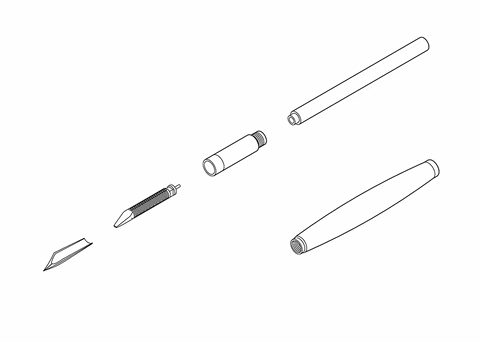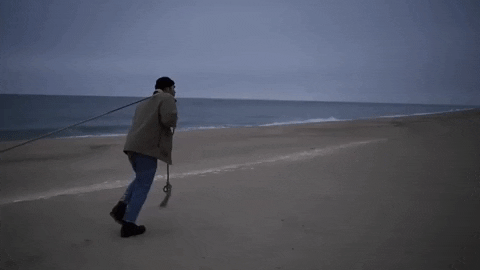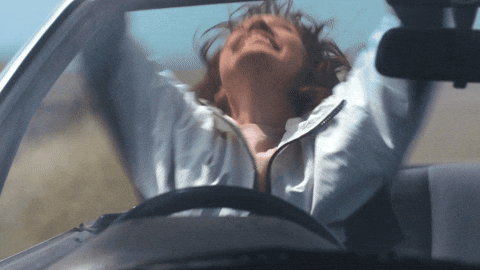
A quick note on ‘easy sound’ in poetry
When you first started learning poetry, you probably came across the complicatedly spelt but easily graspable term of “onomatopoeia”, which basically just means –The sound of the thing being described
So ‘moo’ would be an example of onomatopoeia for cows, whereas ‘achoo’ mimics the sound of people sneezing. Among all the sound devices, onomatopoeia is arguably the easiest – because it’s the most obvious. The others ones, which we’ll look at in this post, are alliteration, assonance and consonance. Like paradox and oxymoron (which you can learn all about here), these sound devices are related, but different – and sometimes, confusingly so.
But unlike paradox and oxymoron, which are semantic devices (i.e. related to the meaning of words), alliteration and assonance are sonic devices, and this makes it considerably harder to analyse in terms of their contribution to the themes and meaning of a given text.
Hopefully, this post will make it easier for you!
The others ones, which we’ll look at in this post, are alliteration, assonance and consonance. Like paradox and oxymoron (which you can learn all about here), these sound devices are related, but different – and sometimes, confusingly so.
But unlike paradox and oxymoron, which are semantic devices (i.e. related to the meaning of words), alliteration and assonance are sonic devices, and this makes it considerably harder to analyse in terms of their contribution to the themes and meaning of a given text.
Hopefully, this post will make it easier for you!
Alliteration, assonance and consonance explained
First, let’s get the basics out of the way –-
- Alliteration:
The repetition of a) consonant sounds (anything that isn’t ‘aeiou’), b) emitted from the first letter / stressed syllable, and c) placed in close proximity with one another
-
- Assonance:
The repetition of a) vowel sounds (‘aeiou’), b) placed in close proximity with one another. First letter / stressed syllable placement is NOT necessary.
-
- Consonance:
The repetition of a) consonant sounds b) placed in close proximity with one another. First letter / stressed syllable placement is NOT necessary.
Here’s a diagram to help visualise: To illustrate with examples –
To illustrate with examples –
-
- Alliteration:
Sally said she would make Sam a salami sandwich on Sunday.
-
- Assonance:
Sally said she was mad that Sam got canned tuna from the groceryman again.
-
- Consonance:
Sally was dissatisfied with the unreasonable requests she kept receiving from Sam, especially the one for minced sardine sandwiches, which she thought to be an exceptional waste of time.

Silly as these sentences may sound (see what I did there), I hope they clarify for you the relationship between these important devices.
Notice, by the way, that alliteration, assonance and consonance all fall under the broad umbrella of repetition (which I write about at length here).What are the different types of alliteration?
Now that we’ve got the macro distinctions out of the way, it’s time to dive into the specifics and look at the different types of alliteration. As mentioned, alliteration refers to the repetition of consonant sounds (which is not necessarily a repetition of the same letter, e.g. the ‘c’ in ‘centre’ would alliterate with the ‘s’ in ‘silly’, not ‘c’ in ‘crazy’). Minus the 5 vowels ‘a, e, i, o, u’, that means there are 21 consonant sounds that can be alliterated. But instead of saying “the alliteration of the ‘b’ sound” or the “alliteration of the ‘f’ sound”, we can be a bit more technical by using the terms below:

Is assonance basically just another kind of rhyme?
Kind of. Yes. In fact, we can think of assonance as a sort of ‘scattered’ rhyme – a combination of slant rhyme and half rhyme. On the contrary, regular rhyme usually follows a set pattern, such as- End rhyme: the last words in each line sound similar to each other),
- Alternate rhyme: the last words in every other line sound similar to each other
- Chain rhyme: the last word in one stanza sounds similar to the last words in the next stanza
- Rhyming couplet: the last word in successive lines sound similar to each other)
How to write a killer analysis on alliteration – reading ‘Pied Beauty’ by Gerard Manley Hopkins
Statistically, I’ve come to realise that it’s actually quite hard not to find alliteration in most poems, so what makes this literary device worth analysing usually rests on how much alliteration there is in a given poem. First, before we even get into the technical specifics, it’s important that we gain an overall sense of what a poem sounds like. On a most basic level, does it sound pleasant or noisy? When you read it aloud, do you feel like the words are short and abrupt, or do the syllables seem to drag out without much friction on the tongue? Then, refer to the table on the ‘two main sound camps’ I’ve outlined above. Most likely, if a poem sounds ‘noisy’ (not necessarily in a ‘harsh’ sense, but loud), then there would be more plosives, fricatives, affricates and nasals; if a poem sounds mellifluous, then you’d probably find more sibilants, semivowels, laterals and rhotics. As a caveat, this is not a hard and fast rule, just a general guide to get you started on thinking about poetic sounds in a more schematic way. One of the most well-known alliterative poems (which is different from the Medieval alliterative verse) is Gerard Manley Hopkins’ ‘Pied Beauty’, which was written in 1877 but published posthumously in 1918.
‘Pied Beauty’s’ message is rather straightforward: we should celebrate God for having created “all things” on Earth, regardless of whether these things are ordinary, beautiful, weird, or imperfect. What makes this poem such a work of wonder, though, is in Hopkins’ skilful use of alliteration.
Hopkins’ ‘Pied Beauty’ is overwhelmingly ‘noisy’, to say the least. If you don’t read this poem aloud, then I’d argue that you’ve not read this poem at all. The way it sounds is arguably just as important as what it says:
One of the most well-known alliterative poems (which is different from the Medieval alliterative verse) is Gerard Manley Hopkins’ ‘Pied Beauty’, which was written in 1877 but published posthumously in 1918.
‘Pied Beauty’s’ message is rather straightforward: we should celebrate God for having created “all things” on Earth, regardless of whether these things are ordinary, beautiful, weird, or imperfect. What makes this poem such a work of wonder, though, is in Hopkins’ skilful use of alliteration.
Hopkins’ ‘Pied Beauty’ is overwhelmingly ‘noisy’, to say the least. If you don’t read this poem aloud, then I’d argue that you’ve not read this poem at all. The way it sounds is arguably just as important as what it says:
Glory be to God for dappled things – For skies of couple-colour as a brinded cow; For rose-moles all in stipple upon trout that swim; Fresh-firecoal chestnut-falls; finches’ wings; Landscape plotted and pieced – fold, fallow, and plough; And áll trádes, their gear and tackle and trim.In the first sestet, plosive words dominate, followed by fricatives. Even in the three sibilants that we can find (“skies”, “stipple”, “swim”), two of them are conjugated with plosive sounds (“sk-“ and “st-“). There’s a wide variety in the range of plosive consonants featured, such as ‘b’ (“brinded”), ‘c’ (“couple-colour”), ‘d’ (“dappled”), ‘g’ (“Glory be to God”), ‘p’ (“plotted and pieced”, “plough”) and ‘t’ (“tackle”), while the use of fricatives are mostly focused on the ‘f’ sound (“fresh-firecoal”, “chestnut-falls”, “finches”, “fold”, fallow”) and ‘th’ sound (“things”, “that”, “their”). There’s also consonance weaved in, specifically in “upon” and “firecoal”. You can see, then, that this isn’t so much a stanza as it is a symphony composed in words; it is less poetry than music. The bigger point is that beauty lies not just in what’s pleasing to the ear and the eye, but paradoxically, also in what’s jarring, odd, discordant and unconventional. The mixture of sounds may seem “counter” to what we’re normally used to, but it is “original”, and for that, it is to be celebrated. In the forceful push of the tongue when we read “Glory be to God”, the happy jig of the rhythm in “couple-colour as a brinded cow”, and the freeing flit of the lips from reading “fresh-firecoal” and “finches wings”, we are encouraged to experience these moments of vitality, which are vicariously delivered through a vibrant string of alliterative combinations. As we move into the cinquain (i.e. a five-line stanza), however, Hopkins tones down on the plosives and features more sibilants. And yet, the poem’s not much quieter for that:
All things counter, original, spare, strange; Whatever is fickle, freckled (who knows how?) With swift, slow; sweet, sour; adazzle, dim; He fathers-forth whose beauty is past change: Praise him.“Swift, slow; sweet, sour”: sonically, these are similar sounds; but semantically, they are opposite concepts. Is the idea that even with all the stark differences around us, harmony can still exist at large? That God’s all-encompassing hand of creation is a generous one, one that accepts deviations – “whatever is fickle, freckled” – and transmutes them into “beauty [that’s] past change”, because change isn’t necessary by nature of being God’s work? The central paradox is clear: what may seem humanly imperfect is always perfect to God, because whatever He has created is perfect per se. This radical re-imagination of aesthetics, then, grants us a more forgiving approach to looking at the world, and should, in turn, give us greater reason to appreciate all the more whatever seems mundane and strange – to see ‘beauty’ in what’s ‘pied’.
 in each line sound similar to each other), alternate rhyme (i.e. the last words in every other line sound similar to each other), chain rhyme (i.e. the last word in one stanza sounds similar to the last words in the next stanza), rhyming couplet (i.e. the last word in successive lines sound similar to each other) etc.
Assonance, then, is structurally freer, and so the impression is one of holistic, rather than regular, sonic harmony. In that sense, assonance is more organic, whereas rhyme is comparative more stilted and artificial.
in each line sound similar to each other), alternate rhyme (i.e. the last words in every other line sound similar to each other), chain rhyme (i.e. the last word in one stanza sounds similar to the last words in the next stanza), rhyming couplet (i.e. the last word in successive lines sound similar to each other) etc.
Assonance, then, is structurally freer, and so the impression is one of holistic, rather than regular, sonic harmony. In that sense, assonance is more organic, whereas rhyme is comparative more stilted and artificial.
How to write a killer analysis on assonance – reading ‘The Road and the End’ by Carl Sandburg
In general, it’s worth remembering that there is always a dichotomy to assonance. What this means is that on the one hand, assonance’s resemblance to rhyme creates a sense of uniformity, but the lack of pattern in which it appears also conveys a degree of randomness. The structural tension inherent in assonance, then, makes it ideal for poetry about struggle and conflict, especially the sort between self and society, or inner and outer worlds. Carl Sandburg’s ‘The Road and the End’ is a good example of this. In his poem, Sandburg’s speaker expresses his desire to go on a journey by foot – “I shall foot it”, during which he expects to come into close contact with nature. This desire for solitary freedom, however, isn’t born entirely without guilt. As the poem begins–I shall foot it Down the roadway in the dusk, Where shapes of hunger wander And the fugitives of pain go by.Already, we see the first inklings of assonance in “it/fugitives”, “shapes/pain” and “hunger/wander”. But what of it? Despite this scene being a yet-to-be-realised future (“shall”), the speaker tells us that he knows what to expect, at least at the start of his journey – his pursuit for individual freedom with begin with him seeing signs of human tragedy “down the roadway”. For all the unknowns that will await him in this journey, he understands that to witness “shapes of hunger wander” and “the fugitives of pain” is a regular occurrence in life, one which past travellers have come across, and which future travellers like himself will also encounter.
 Compared to the pain and deprivation in the human world, however, the regular patterns in nature are not quite as depressing.
To the speaker, they convey freedom, courage and empowerment, all of which restore a semblance of harmony in a mind conflicted –
Compared to the pain and deprivation in the human world, however, the regular patterns in nature are not quite as depressing.
To the speaker, they convey freedom, courage and empowerment, all of which restore a semblance of harmony in a mind conflicted –
I shall foot it In the silence of the morning, See the night slur into dawn, Hear the slow great winds arise Where tall trees flank the way And shoulder toward the sky. The broken boulders by the road Shall not commemorate my ruin. […]As the speaker’s visualisation of his journey takes clearer form, elements of nature come together in subtle sonic harmony. We hear the ‘ee’ (‘in’) sound in “In… morning… into dawn”, the ‘a’ (ey) sound and the ‘ai’ sound in “great winds arise/Where tall trees flank the way/And shoulder toward the sky”; the ‘o’ sound in “shoulder… broken boulders… road”. Haphazard as the positioning of these assonant words may be, their euphonious sounds pose a moderating counterforce against the descriptions of potential danger by great winds, tall trees, and broken boulders. As the poem proceeds, the speaker’s internal state moves closer towards the spirit of the external world he sees –
Regret shall be the gravel under foot. I shall watch for Slim birds swift of wing That go where wind and ranks of thunder Drive the wild processionals of rain.There’s even more evidence of assonance here: “Regret/gravel”, “slim/swift/wing/wind”, “go/processionals”, “drive/wild” – the overall impression is one of man and nature coming together as one. Perhaps the speaker is inspired by the fearlessness with which nature embraces the unknown, such as the fragile, but determined, birds headed for a wild thunderstorm. He is, in turn, infected by this demonstration of courage, which he lacks to actually embark on the journey he’s imagining, to remove the future tense of “shall” and realise it in the very present. He’s aware that there is no room for regret, and is determined to crush it as “gravel under [his] foot”. And from the way Sandburg ends his poem with a neat assonant pair in the last two-line stanza, we see the speaker’s desire come full circle –
The dust of the travelled road Shall touch my hands and face.“The dust/Shall touch”: this parallelism of the “uh” sound is a satisfying one. In the speaker’s mind, he already sees – to borrow Macbeth’s defining words – ‘the future in the instant’. But instead of death, his future is one of rebirth, of being able to finally be out there in the wild and feel nature blowing against his flesh as a free man.

I hope this post helps you with sound analysis, which you can apply to either poetry or prose. Let me know in the comment section if you found this useful, and what else you’d like me to write about in the future!

